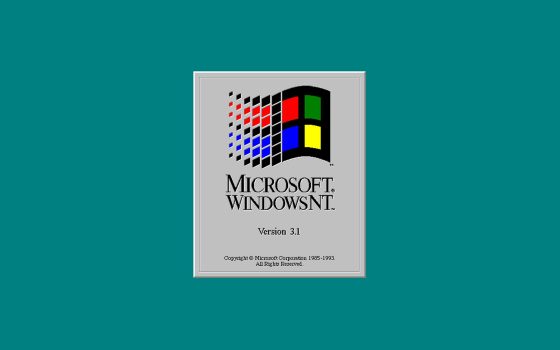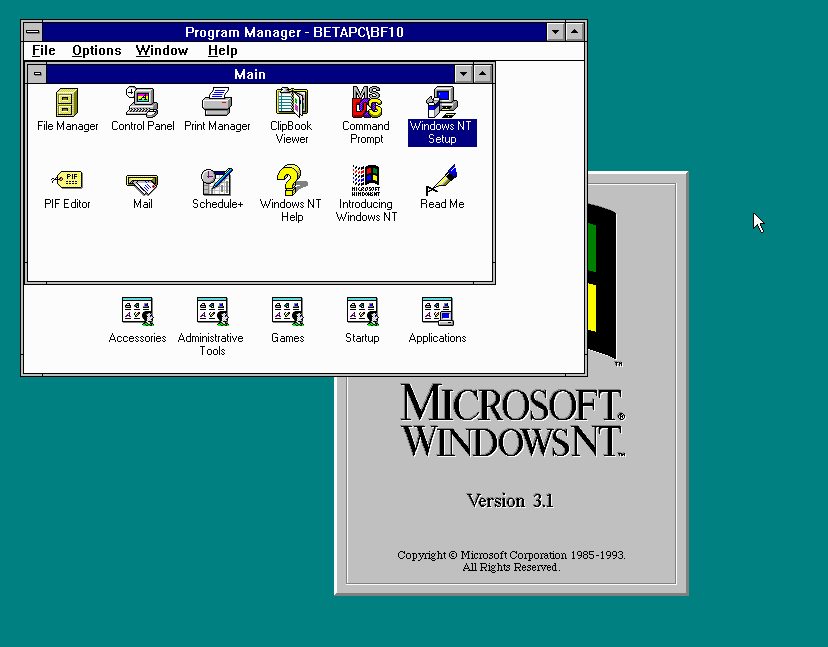It was July 27, 1993. On what remains in the annals of computer science as a certainly important date, Microsoft launched one of the most innovative operating systems. At least for those years. It was about Windows NTa platform that the company had begun to develop in 1988 and which decisively broke with the past by winking at a mainly professional and corporate audience.
The previous Windows 3.1, in fact, presented itself as a simple graphic interface for the MS-DOS operating system. It was therefore not considered as a real operating system so much so that the most “popular” description was precisely operating environment.
Thirty years ago, instead, presenting Windows NT 3.1 the company led at the time by Bill Gates was preparing to make the first important “big leap”. The differences compared to what was achieved in the recent past were enclosed in the acronym “NT”, which stood for “New Technology“.
Microsoft itself, in the article “Happy 30th birthday Windows NT” just published on the company blog, celebrates what is considered a real milestone.
Some news on the birth of Windows NT 3.1 and on the decision to focus on Intel x86
Leading the development of Windows NT 3.1, Gates himself had put Dave Cutlerprominent personalities with a long experience in Digital Equipment Corporation (DEC).
The initial plan was to work with IBM on a version of its operating system OS/2. In addition, the reference architecture for the CPU supported by the new operating system was the Intel i860, itself built on RISC.
However, Microsoft decided to shelve the partnership with IBM, thanks in part to the success of Windows 3.0, which was launched in 1990. The decision was also made to run the operating system with the chip Intel based on standard x86 architecture. A choice that has never been questioned, not even today, cementing the pairing “Wintel” (Windows-Intel).
The system requirements for installing Windows NT 3.1 on machines Intel x86 they were quite high for 1993. The system required a CPU clocked at least 25 MHz, 12 MB of RAM, 75 MB of hard disk space, and a VGA graphics card. The real problem is that i was missing at the time programmi a 32 bit (see further on).
The “NT” series was certainly lucky: still today we wonder how the Windows operating systems of the 90s are faster in starting applications than modern machines.
The innovations introduced with the launch of Windows NT 3.1
Windows NT 3.1 introduced a number of important innovations which differentiated it from previous Microsoft operating systems. First, Windows NT 3.1 used a32-bit architecture which represented a significant technological advance with several advantages for data processing and memory management.
In the article dedicated to running 8, 16, 32, 64 bit we have seen what it means to be able to use the most recent and updated operating systems and architectures. In short, the switch to 32-bit meant the possibility for users and applications to benefit from a wider space of memory addressing. A 16-bit system can address up to 64K of memory, while a 32-bit system can address up to 4GB of memory.
With a 32-bit architecture, the processor can process more data in one go clock cycle than on a 16-bit system. This allows you to perform more complex operations and process large amounts of data more efficiently.
Support for 32-bit instructions allows you to deal with larger numbers and perform more complex mathematical operations than in the past. Hence the possibility of carrying out more demanding processing and supporting more advanced applications with obvious benefits also on the side of software development.
Cross-platform system, memory protection, support for TCP/IP and NTFS file system
Windows NT 3.1 was also a cross-platform operating system designed to work with different processor architecturescomprese x86 (Intel e AMD), DEC Alpha e MIPS R4000.
It was then that Microsoft engineers introduced the memory protection to prevent programs from directly accessing the memory of other processes, solid support for local area networks and, finally, for the protocol TCP/IP (it was thus possible to set aside the Trumpet Winsock) as well as for DNS server functions.
With Windows NT 3.1, the NTFS file system was introduced offering advanced features such as file compression, the access control, restore points and reliable management of large amounts of data. It was the platform that consecrated the introduction of the preemptive multitaskingof the support multiprocesso e multi user.
As icing on the cake, the first Windows NT of thirty years ago featured a much more advanced graphical interface than previous Microsoft operating systems and guaranteed greater safety such as support for domain-level authentication and centralized password management.


